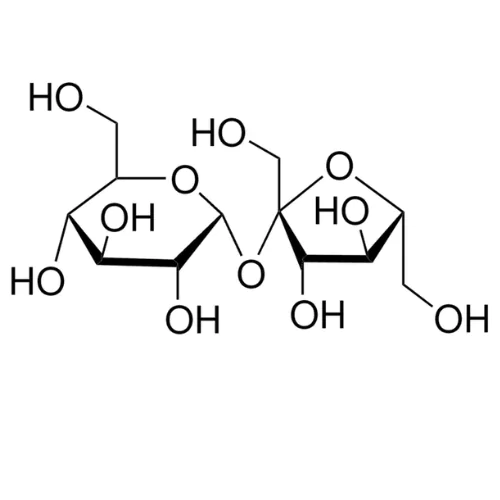Synonyms:
α-D-Glc-(1→2)-β-D-Fru, α-D-Glucopyranosyl β-D-fructofuranoside, β-D-Fructofuranosyl-α-D-glucopyranoside, D(+)-Saccharose, Sugar.
Cas No. 57-50-1
Molecular Weight: 342.30
Description:
Sucrose is a disaccharide, which means it’s made up of two monosaccharides: glucose and fructose. It’s a naturally occurring carbohydrate found in a variety of plants, but it’s most commonly extracted from sugarcane and sugar beets for commercial use.
- Appearance: Sucrose is a white, crystalline substance, commonly known as table sugar. It’s odorless and has a sweet taste.
- Source: It’s primarily obtained from sugarcane and sugar beets, but can also be found in small amounts in fruits, vegetables, and other plants.
- Digestion: When consumed, sucrose is broken down in the body by an enzyme called sucrase into glucose and fructose, which are then absorbed into the bloodstream.
- Uses:
- Culinary: It’s widely used as a sweetener in food and beverages, to enhance flavor or as a preservative (e.g., in jams or canned fruit).
- Industrial: It’s also used in making syrups, candies, and even in pharmaceuticals and cosmetics as a stabilizer or bulking agent.
- Health Impact: While sucrose provides quick energy in the form of glucose, excessive consumption of sucrose (especially from processed foods) can lead to health issues like weight gain, diabetes, and dental cavities. It’s important to keep intake balanced.
Specification:
Purity: 99%
Color: White
Form: Crystalline powder



Reviews
There are no reviews yet.